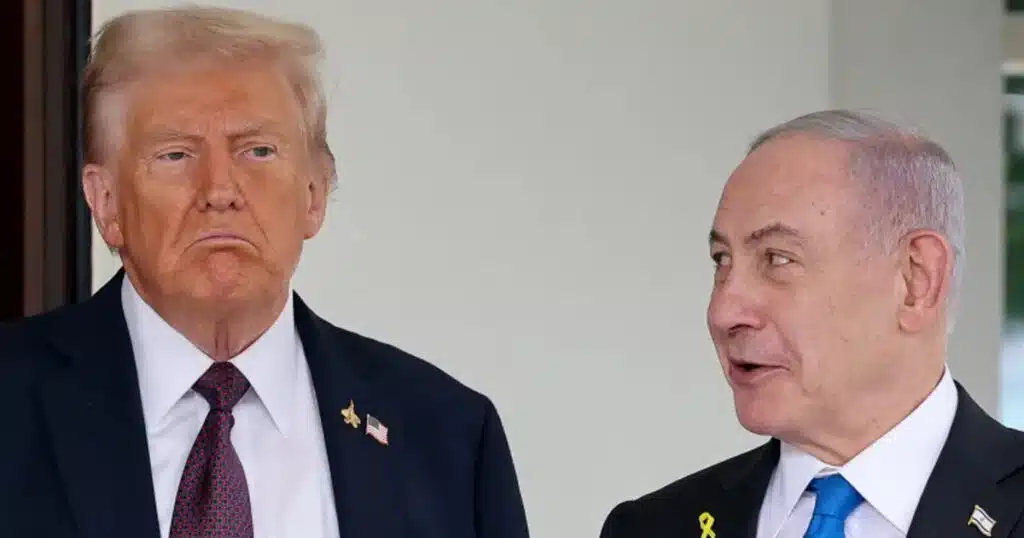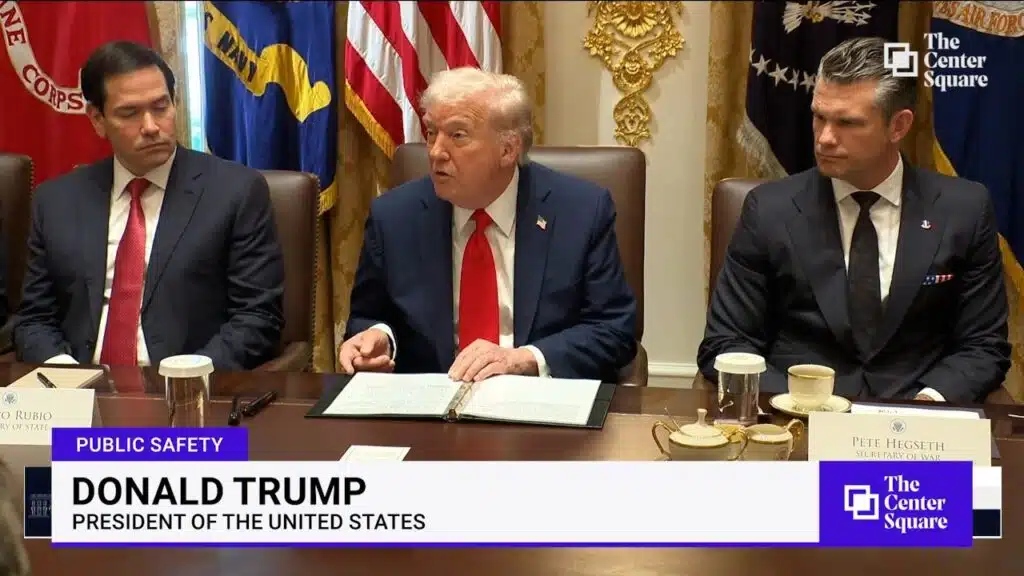
South American Partners Turning Away From US and Toward China, Iran
Earlier this month, Beijing’s state-owned China Southern Power Grid announced the acquisition of nearly $3 billion in assets of Peru’s electric power grid, giving China control of at least 70% of Peru’s electric distribution market. The deal is remarkable, among other reasons, because it follows months of violent protests that have rocked Peru since December following the impeachment and arrest of socialist president Pedro Castillo. This is no accident. Peru’s destabilization is opening the door for anti-American forces like China and Iran, who are seeking a permanent foothold in the Western Hemisphere.
While the mass pro-Castillo riots of January and February have dissipated, smaller waves of protests and road blockades have entered their fifth month in the southern region of Puno, near the Peru-Bolivia border, a reminder that the country’s political crisis is far from over.
At the protests’ peak, 117 roads were blockaded throughout the country. So far, at least 66 people have died, including a policeman burned alive and six soldiers drowned to death, with dozens of public buildings attacked. In December, when the coup attempt occurred, through January, 859 police officers reportedly had been injured and 43 police stations were looted or burned.
To assume that Peru’s crisis is occurring in a vacuum or ends with street protests ignores the lessons of other recent turmoil in the region.
In March 2020, for example, the National Defense University’s Perry Center for Hemispheric Defense Studies released a report that showed the role of the “Bolivarian Joint Criminal Enterprise” in inciting protracted social disturbances in Chile, Colombia, and Ecuador—three long-time AS. partners—since 2019.
The Bolivarian Joint Criminal Enterprise is one of several terms used to refer to the threat network of the Latin American authoritarian left and their global state and illicit non-state allies. This can be understood plainly as an anti-American threat network.
The ‘Bolivarian’ threat network incited the 2019 disturbances in Chile, Colombia and Ecuador by using narco-terrorist armed groups and socialist “solidarity conferences” to train and mobilize “shock troops” that participated in the riots. It also used individual facilitators to fund and coordinate disturbances and deployed social media disinformation accounts.
This does not mean that these protests did not include legitimate grievances or peaceful protesters, but that the network coopted these for its own ends.
The result? U.S.-friendly governments in these countries were forced to make concessions to the rioters and spend scarce resources to address the unrest. The threat network also advanced anti-democratic and anti-American narratives and opened new local spaces for organized crime and U.S. adversaries to operate in.
In subsequent elections, Chile and Colombia voted out U.S.-friendly incumbents and turned to far-left leaders. Chile’s last president was pressured to allow a vote to overhaul the country’s decades-old constitution—a tense political battle that continues today.
In Ecuador, coordinated riots have continued and pressures on the current center-right government of President Guillermo Lasso are mounting.
As the threat network understands it, such coordination is a form of warfare, elaborated by former Venezuelan dictator Hugo Chavez as a form of “fourth-generation warfare.” Such 4th generation warfare, a form of asymmetric warfare, aims to counter U.S. influence and bring countries into the socialist camp without needing to use conventional force. It is seen as a continuous and deliberately protracted struggle.
Peru’s turmoil is the latest example of these efforts. According to the National Defense University report, Peru was publicly identified as a “next target” by the network in 2020.
The December arrest and impeachment of Castillo, a Marxist and threat network ally, following his failed coup attempt against Peru’s congress created the opening. The network-backed protesters made unconstitutional demands, calling for the ousting of Castillo’s vice president and successor, current President Dina Boluarte.
Like other protests, Peru’s have been a mixed composition of organized radical pro-Castillo groups, other protesters disaffected with government corruption, and illicit actors. But the indications that this was a coordinated effort are increasingly clear. Castillo allies reportedly wired daily payments to mobilize protesters. The attempt to seize five airports also shows a level of sophisticated coordination.
Peruvian authorities found that terrorist elements of the protests included the Shining Path, the historic Maoist terrorist group, and other armed groups, including the Etnocaceristas, a separatist group in southern Peru.
Edwar Quiroga, a known operative in the mining-rich Apurimac region in southern Peru, is known to link the Etnocaceristas to Iranian intelligence. Quiroga previously ran Inkarri Islam, a Shia culture center in Apurimac that offers political and ideological training to young Peruvians. A Castillo ally, Quiroga was arrested last August in southern Peru with 19,000 cartridges of dynamite. Just four months later, Peru’s protests began with an insurgency in Apurimac. Last week, Boluarte reestablished relations with Iran—an unprecedented development in Peru.
Additionally, Cuba’s ambassador to Peru, Carlos “El Gallo” Zamora, an operative for the Cuban regime’s nefarious G2 intelligence directorate, is known for decades of recruiting agents to infiltrate and disrupt the region’s democracies.
Moreover, former Bolivian president and key threat network member Evo Morales was banned from entering Peru for malign foreign interference. Peruvian authorities found Bolivians chief among the foreign nationals involved in the country’s violent riots. Morales’ operatives were found to have illegally crossed the Peru-Bolivia border over 27 times between 2021 and 2022.
Bolivia, a landlocked country where China is active in lithium extraction, depends on Peru for global trade. Russia and Iran are actively involved in uranium mining in Bolivia. The protracted disturbances near the porous Peru-Bolivia border help benefit the trafficking of drugs as well as gold, lithium, and other illicitly mined products—all of which can be used to fund political operations of the threat network.
The confluence of illicit, ideological, and geopolitical interests behind Peru’s turmoil mirrors that of recent well-recorded cases in neighboring democracies. This also means that the crisis does not end with the end of the protests. In a battle of narratives, protesters now demand that Peru hold early elections while falsely casting the political right as co-governing with Boluarte.
All of this unravels as the U.S. rapidly loses allies and partner governments in the region while anti-American forces make permanent gains. Those who insist that China’s economic activity in Peru was negatively affected by the protests have been proven wrong by last week’s sale of a large part of Peru’s electric power grid from private Italian firm ENEL to China. The turmoil might dissuade legitimate private investment from competing in the country, but China’s predatory state firms stand to benefit.
The U.S. must begin countering the “Bolvarian” threat network’s asymmetric warfare with an informational and public diplomacy response. Congress should press the White House to do so, and it should mandate that the administration update it on Peru’s illicit trafficking flows and those flows’ potential links to political activity. It should also urge Peru’s consumer protection agency, INDECOPI, to reject China’s recent monopolistic acquisition of electric power.
The last time that another threat network ally governed Peru, a Chinese state-owned company was able to secure access to a deep-sea mega-port that is key to Beijing’s Pacific naval ambitions, and Peru became another one of China’s “comprehensive strategic partners.”


